ARDUINO LABS OPENS ITS “DOORS”
– August 2nd, 2011
Today we open Arduino Labs, a new website we have been working on for a few weeks that will allow us to post documentation about projects we are working on that are not ready to be “official” yet.
We want to have a more open development process within the Arduino project and this is one of the many steps that are getting us there.
Another function of Labs is to bring closer to Arduino a number of projects made by members of the community that we want to make more official and easier to find.
There are a lot of libraries, for example, developed by great people that sometimes are hard to find or the original maintainer stops working on them at some point. With Labs we’ll be able to create a permanent home for those libraries and give space on our gihub for that code.
This is just the beginning but we already have a couple of great projects for you:
Android/Arduino ADK tool for Processing
a set of tools that let you develop Android accessories with Arduino using only the Processing language without having to learn how to program the Android API in Eclipse. We believe this will make it much simpler for people to make use of the power of the Arduino ADK board
Arduino GSM Shield
In the last few months we have been working with the great people at Telefonica I+D in Spain on the design of a GPRS shield for Arduino. We made a few prototypes that have been used in a Hackaton we ran with Telefonica in Spain on the 17 of july. The pages on Labs provide the initial documentation for the prototypes and open the door to more work to be done to make the product ready for everybody.
We hope you appreciate this new tool and please send us feedback or propose projects at labs@arduino.cc
IAAC’S CAN-BASED INTERACTIVE ARCHITECTURES
– August 1st, 2011
Barcelona-based IAAC school is hosting a summer school (in Barcelona and Mumbay). The theme of this year’s course is creating an urban tool of a networked city based on a new informational layer.
What happens if we think Urbanism and Energy through a new informational layer added in our cities?
COMPUTERLESS ARDUINO
– July 29th, 2011
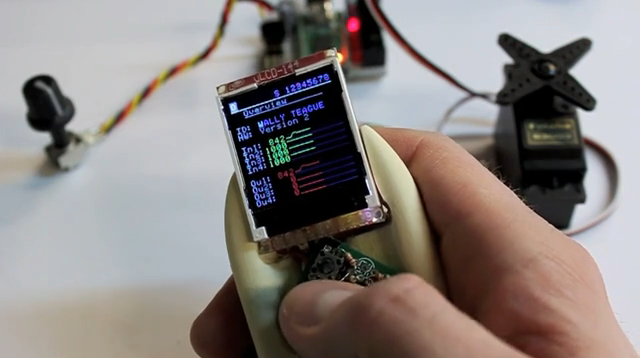
Ever wanted to reprogram Arduino without a Computer? Have a look at the [Teague Labs] tutorial.
The Computerless Arduino consists of two major components; an Arduino-compatible microcontroller loaded with a realtime code interpreter, and a stand-alone 5 button LCD display to display port values and manipulate code. The display can be connected to the Arduino via a 4-pin port at any time to peek at In/Out values, view the current code, and make changes as desired.By keeping the display separate, it’s possible to have many dedicated Arduino modules (we’re using one of the smallest, cheapest, and most-capable Arduino clones, the Teensy2.0 for $18), without needing to spend much on each additional device. For the display we’re using the super small uLCD-144 (by 4D Systems for $29), and the system could easily be modified to use a larger display or computer if desired.
via [CreativeApplications] source [Teague Labs]
ARDUINO-BASED VIDEO SORCERY
– July 28th, 2011
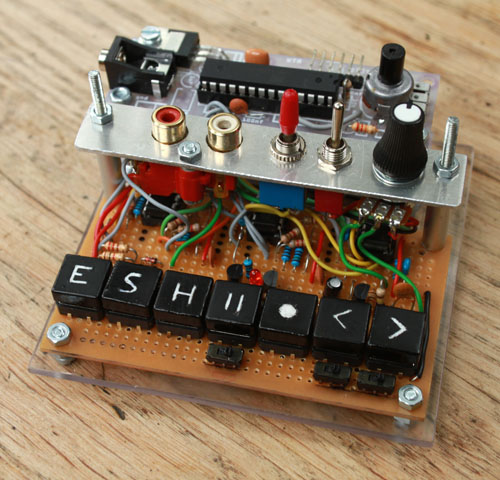 ù
ù
Wonderful Arduino video sampler from [giekes.nl] (At the moment in its 1 bit / 1 and half bit stage) . The project is based over [TVout] library, [Video in on TVout] and [Ram library and 23k256 circuit]. Amazing job.
If you dig the 8-bit style colourful site you’ll discover several other video oddities based on Arduino (or at least Atmega328), well explained and referenced by the [Gijs Gieskes].
via [giekes.nl]
ADK + ANDROID HACKS IN YAHOO OPEN HACK IN BANGALORE
– July 25th, 2011

Hacking days upcoming in Bangalore, India, for Yahoo HackDay 2011. Have a look at the schedule of the event, as well as the Hardware Hacks Wiki. We expect Arduino ADK + Android hacks to rule the scene!
[sudar] (is giving) a talk on Arduino and Android ADK and will be demoing some of the hacks which I have created using them. If this hasn’t convinced you, then there is more. Yahoo is also going to sponsor 50% price for the hardware that you need for hacking. Yes, you read it right again. We have arranged this offer with 9 Circuits. Head over to the Open hackday wiki to get more details about it.
via [Sudar's Blog] source [OpenHack India 2011]
FAI UN CONTACHILOMETRI CON ARDUINO! [WIRED]
– July 20th, 2011
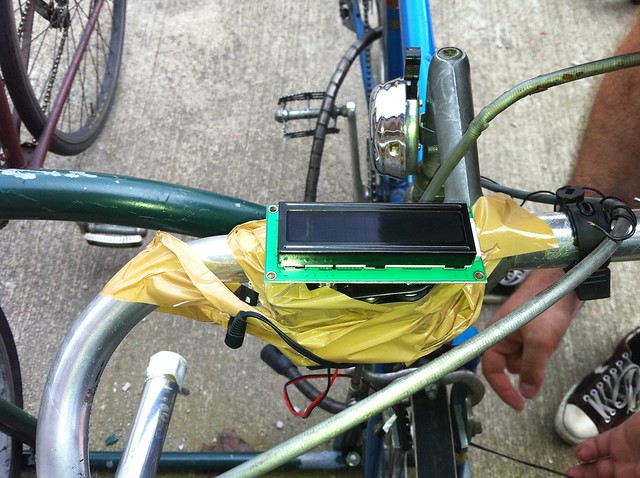
Riportiamo qui di seguito il tutorial su come realizzare il proprio contachilometri, pubblicato su Wired di Giugno. A realizzarlo sono stati due membri della community: Vittorio Zuccalà con il supporto di Enkel Bici. Per realizzarlo hanno usato una Arduino Uno, un SD shield di Sparkfun e una Reed Switch (sostituibile anche da un Hall Sensor).
L’idea è semplice: tramite arduino si visualizza la velocità di punta e la velocità media su un display 16X2.
Per contare i giri della ruota abbiamo utilizzato un reed switch. Questo sensore si comporta come un interruttore: esso rimane normalmente aperto (e quindi non passa corrente); arduino lo vede come un segnale digitale LOW.
Quando passa un magnete vicino (posizionato sui raggi della ruota), il sensore si chiude facendo passare corrente; in questo modo restituisce un HIGH digitale ad arduino riconosce il passaggio del magnete; il tempo trascorso tra un passaggio e l’altro ci permette di calcolare la velocità istantanea (e successivamente quella media) e, conoscendo il raggio della ruota, si può calcolare il numero di metri percorsi.
[set su Flickr] via [VittorioZuccalà Blog]
FRITZING 0.6 RELEASED, SMD SUPPORT AND MORE
– July 19th, 2011

Electronic Prototyping program Fritzing, very helpful in circuit and hardware design, is released in new version 0.6 [DownLoad]. Now you can use SMD parts as well as most of SparkFun parts. Perfboard and stripboards added as well.
See the full list of updates on the [history of changes] page or keep on reading on [Andre's] post on the Fritzing Blog
via [Fritzing Blog]
DIGITAL LATHE BY FABLABITALIA (BUILD YOUR OWN!)
– July 18th, 2011
Some time ago the guys at Fablab Italia in Turin joined a city exhibition of art, design and related. The exhibition is hosted in Vanchiglia, a neighborhood of Turin, and it’s called Vanchiglia Open Lab (LOV). The project they managed to bring to the Open Lab is really interesting: a digital lathe which lets you interact physically with a 3D program and print your own sketch with the 3D printer.
You need 5 potentiometers hooked up to the first five Analog pins of Arduino. 4 of them are used to modify the shape, the fifth is used to change the step & resolution of the shape. An Hoberman-style sphere lets you control the rotation of those 5 pots in a different way.
Wanna try? Donwload project files (Arduino, Blender, Laser Cutter) from Fablab Italia’s Wiki.
Via [FablabItalia]
ARDUINO ETHERNET, ADK AVAILABLE FOR PURCHASE
– July 13th, 2011
This week we are releasing a few new products and services. We begin with the Arduino Ethernet and the Arduino Mega ADK.
The Arduino Ethernet combines a regular Arduino board with the Ethernet Shield into a single board designed to power your internet of things projects. It has the ability (if fitted with an optional module) to be powered directly from the ethernet cable using a standard called “Power over Ethernet“, this makes ideal for permanent installations in buildings and similar structures.
For example, prototypes of the board have been installed and have been operating for over a year at the “Campari Gallery” museum in Milan Italy relaying sensor data via OSC to video players and other interactive installations with amazing reliability.
You can use any FTDI compatible cable or module to program it. For this purpose we are also releasing a new USB2Serial module that is based on the same circuit that’s used in the Arduino UNO, hacking the firmware on the atmega8u2 will allow you to make amazing stuff with this cheap module.
The Arduino Mega ADK is an exciting new addition to the lineup. Google recently released an Arduino-derived open source accessory development kit (ADK) for Android phones and tablets. This is our take on the platform.
It’s essentially an Arduino Mega 2560 with the addition of a USB Host chip that communicates with the phone and a beefy power supply (the board needs to be able to charge the phone). The communication is implemented using Oleg Mazurov’s USB Host library.
The ADK Sensor Kit makes it incredibly simple to develop with the ADK because there is no need to know anything about electronics, small modular sensors and actuators plug on top of the Mega ADK letting you create protoypes or robust installations in minutes!
Later this week we’ll release a few code examples that will make it very easy for anyone to build Android accessories with Arduino.
We hope you enjoy our new creations.
THE SIMPLE ACT OF MAKING A MARK
– July 12th, 2011

[Alan Rorie] developed The Simple Act of Making a Mark, an installation about abstracting the creative process: The machine begins by looking at what is placed before it and detects patterns within it. The machine then traces those subtle patterns, amplifying and solidifying them until generative patterns emerge autonomously.
The installation uses an Arduino Uno, an AdaFruit Motor Shield, a single USB HD web camera is used for both the computer vision and to build a time lapse movie of each loop. The software is built using Processingwith Messenger, controlP5, fullscreen libraries, and v3ga blobDetection. In addition gCode command structure was used and Bresenham’s line algorithmto determine where and when the steppers should move.





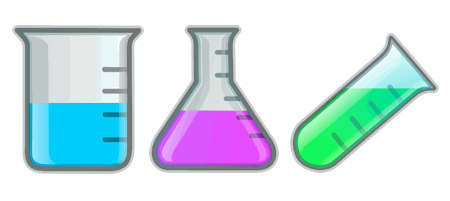
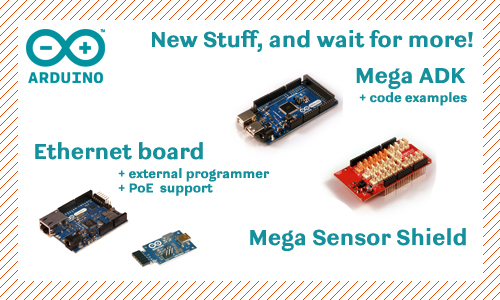






0 comentarios:
Publicar un comentario